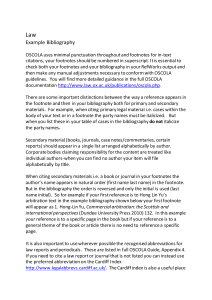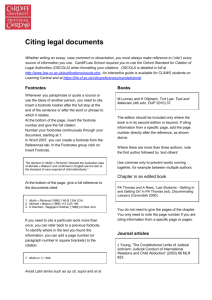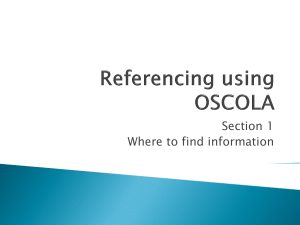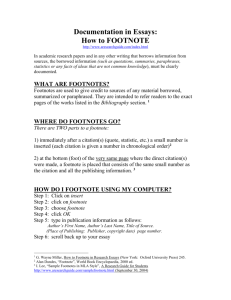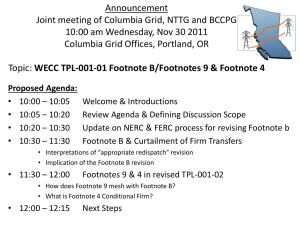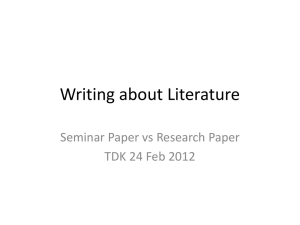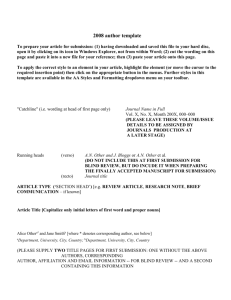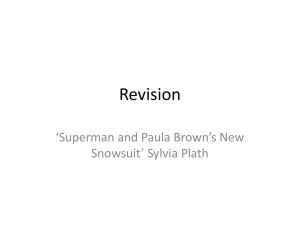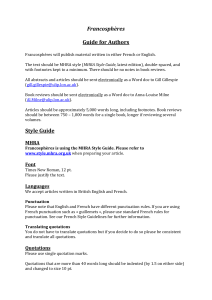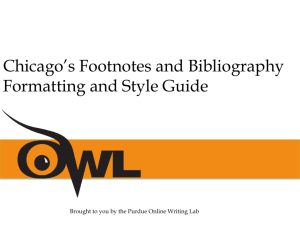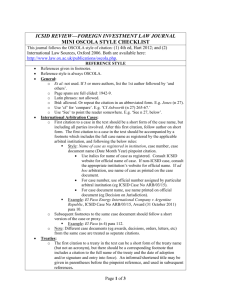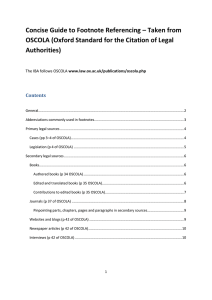OSCOLA Section 2: The basics
advertisement
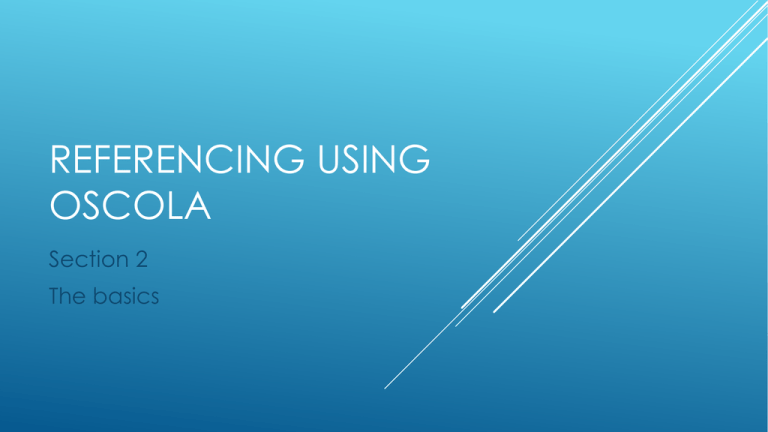
REFERENCING USING OSCOLA Section 2 The basics Consistency. Consideration Minimum for the reader. of punctuation. When citing materials not specifically mentioned in OSCOLA, use its general principles as a guide. PRINCIPLES OSCOLA is based on the use of footnotes. Place the footnote marker at the end of the sentence, unless it needs to be next to a specific word or phrase for the sake of clarity. Word can automatically insert footnotes into your work: see the screenshot on the next slide (on the References tab, click on ‘insert footnote’). FOOTNOTES There is no need to repeat all the information each time (although it is OK to do so). In a subsequent footnote you can give just the author’s name and refer back to the footnote where you gave the full information. WHAT DO YOU DO IF YOU CITE THE SAME SOURCE SEVERAL TIMES? If in footnote 3, you refer to J Bloggs, OSCOLA Made Easy (20th edn, Sanity Press 2011) and you refer to it again in footnote 25, you only need to put 25. Bloggs (n 3). EXAMPLE If the subsequent footnote immediately follows the one where the full citation is given, you can use the Latin term ibid. This is short for ibidem, which means ‘in the same place’. Avoid using other Latin terms. USE OF IBID OSCOLA uses very little punctuation. It is only used where it is essential to avoid confusion. Therefore, an author’s name will be given as AC Smith, not A.C. Smith. PUNCTUATION OSCOLA provides for quotations of under 3 lines to be included within the text, and longer quotations to be indented However, Anglia Ruskin requirements for word counts make a distinction between quotations of up to and over 50 words: rule 6.67 of the Academic Regulations: http://web.anglia.ac.uk/anet/academic/acad emic_regulations.phtml QUOTATIONS Use 50 words as the cut-off point rather than 3 lines (in practice these will be much the same). Quotations of up to 50 words are incorporated in the text, within single quotation marks. Quotations of over 50 words are indented, with no quotation marks. A line space is left before and after the indented paragraph. HOW TO PRESENT QUOTATIONS As Campbell describes this often fraught relationship in his contribution to this volume: Both sides of the metal detecting debate are caught within a paradigm of which they are unaware, and continue to talk to each other in a language of mutual incomprehension. In particular many archaeologists are mystified by the reluctance – or sometimes animosity – which they experience from metal-detector users while many metal-detector users expect the same from archaeologists, and unhappily sometimes get it.1 AN EXAMPLE OF A QUOTATION OF OVER 50 WORDS The assumption underlying the legal protection is the public interest in the preservation of the past. However 'State intervention is not inherently more public - more democratic, more empowering.’1 So the question becomes who is the public? AND ONE WITH FEWER THAN 50 WORDS
